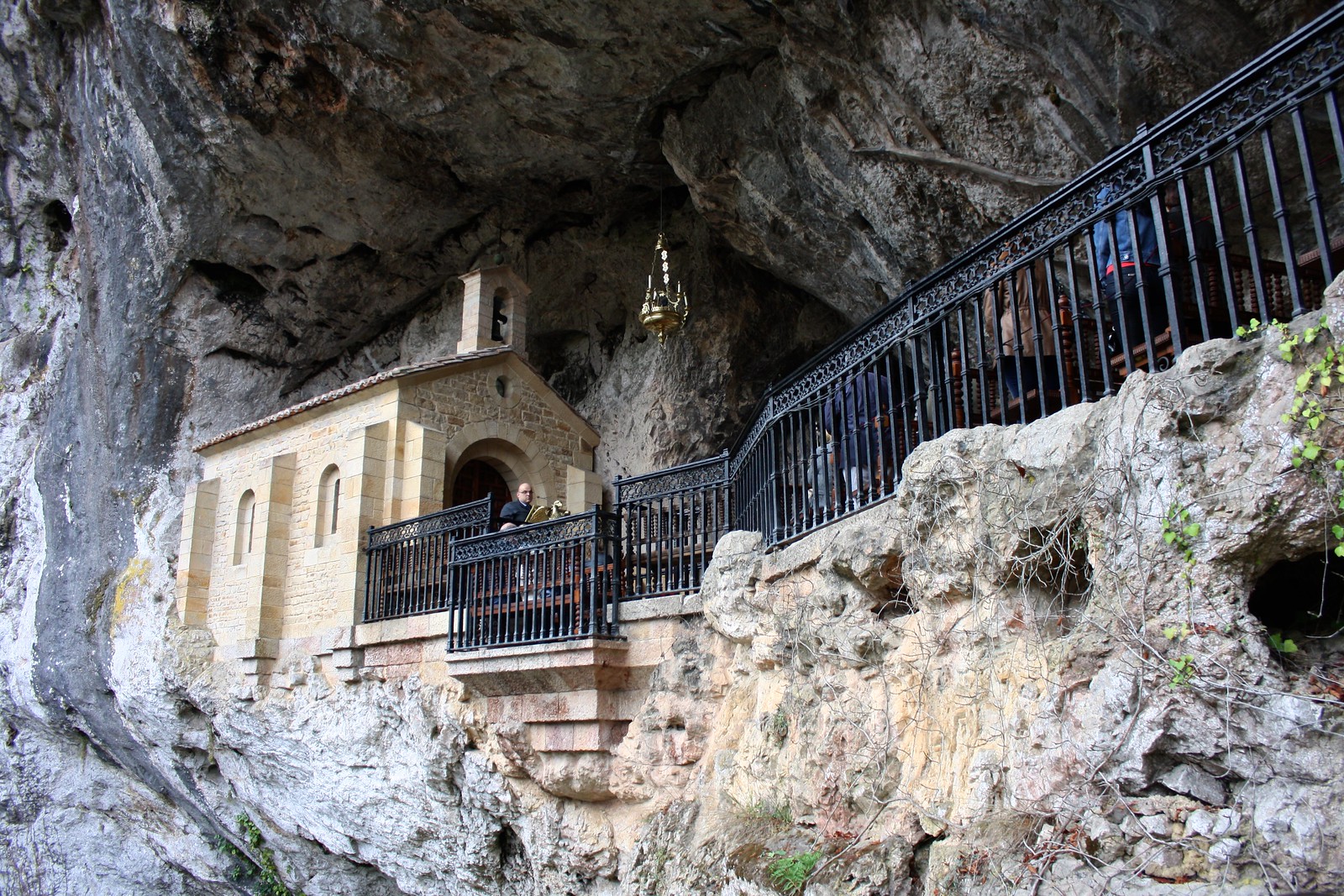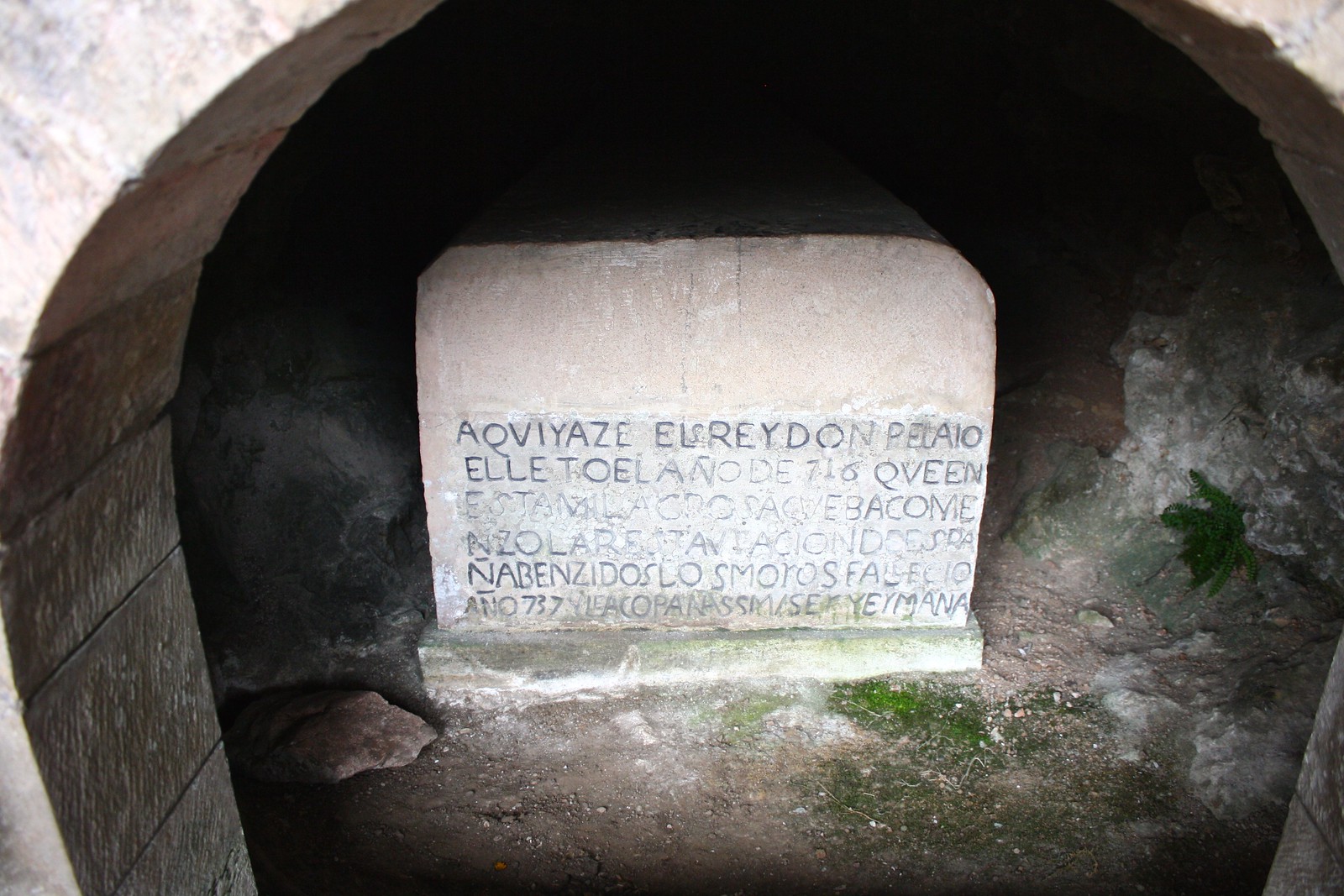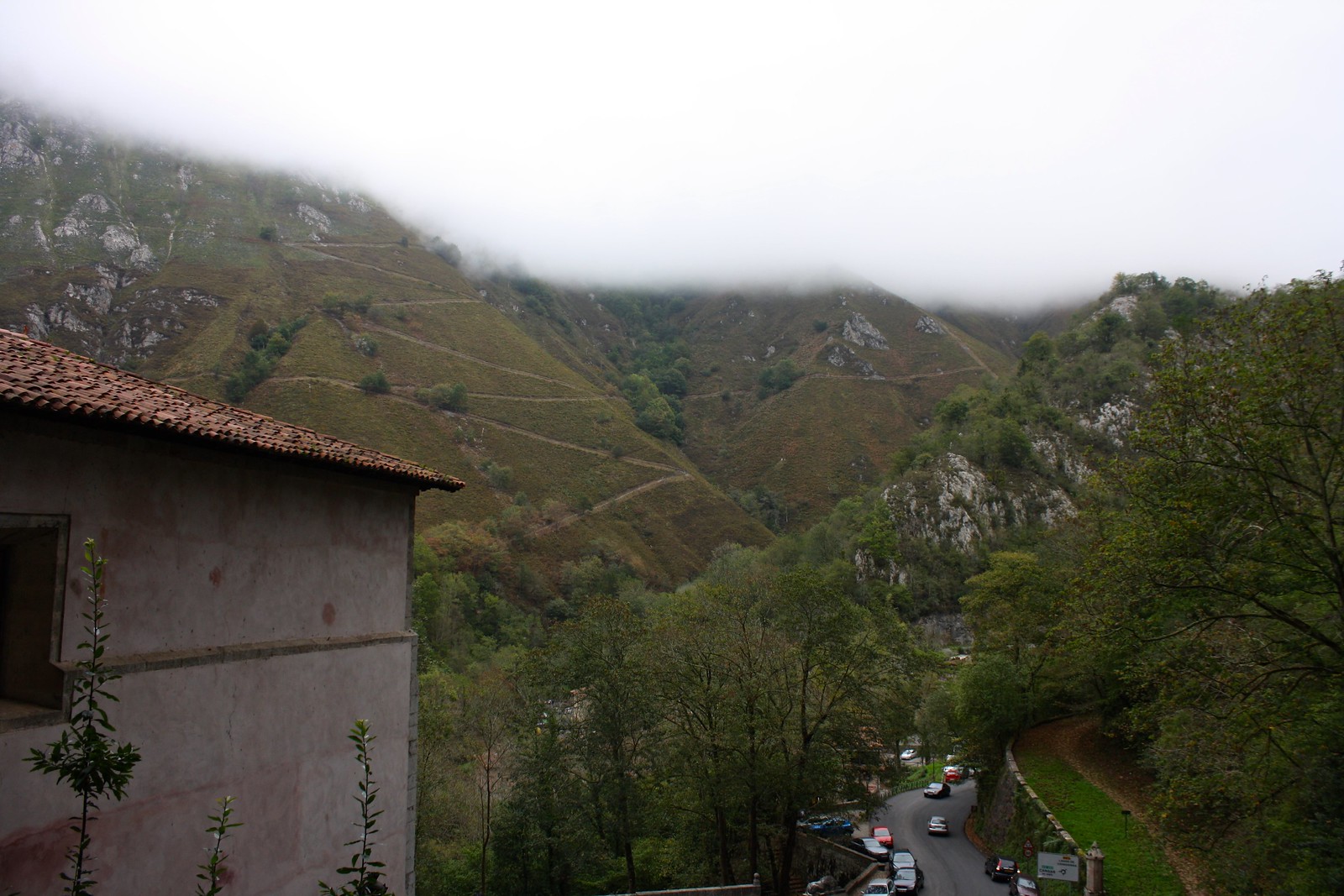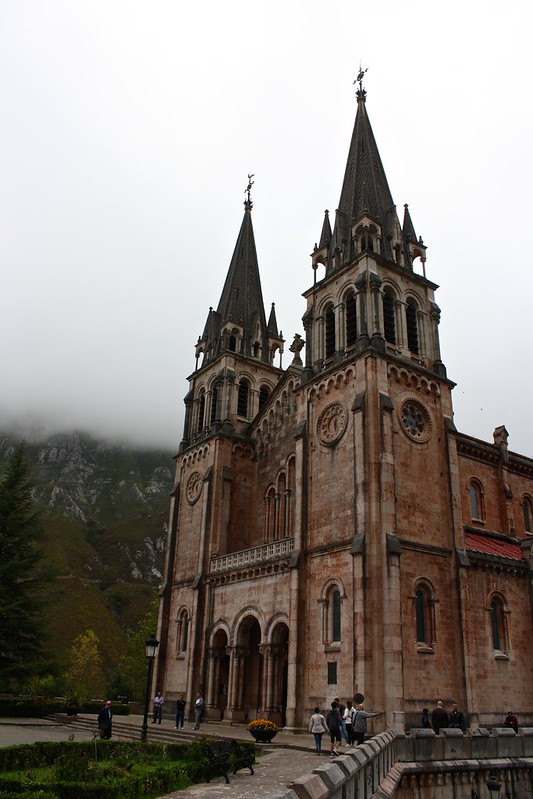Covadonga and the Founding of the Spanish Nation
 |
| Church of Santa María la Real de Covadonga |
There are some places in Spain that draw tourists from all over the world—Antoni Gaudí’s still-unfinished Sagrada Família church, the Moorish wonders of the Alhambra, or the Prado Museum in Madrid—but then there are sites that draw a much more local crowd, monuments like Zaragoza’s Pilar Basilica, the royal pantheons where medieval kings and queens are buried, or a monastery where the Spanish language was first written down.
The Royal Site of Covadonga, hidden deep within the mountains of the Picos de Europa National Park, belongs to the latter group of destinations. A small, underwhelming collection of monuments, Covadonga holds a special place in the Spanish national psyche for being the place where Spain was born.
What happened here?
 |
| The strategically-located cave |
The year was 722. Eleven years earlier, Muslim Berbers from North Africa had invaded the Iberian peninsula, quickly overrunning the feeble Kingdom of the Visigoths. A new Islamic emirate was established that encompassed almost all of modern-day Spain and Portugal—all except the steep mountains that line the north of the peninsula. It was here that a remnant of the old Visigothic ruling class had fled after King Roderick was killed and the government fell apart. They hid out between the lonely river valleys and rugged mountain peaks that dominate the Asturian countryside.
Call them Christian noblemen, call them barbarian warlords—whoever they were, their leader was named Pelayo. And in 722, having previously refused to pay the jizya tax imposed on non-Muslims, Pelayo and the men under his command engaged in combat against a band of Moorish troops…and won, here in Covadonga. After this military success, Pelayo would move to nearby Cangas de Onís and establish the Kingdom of Asturias, the first Christian realm founded after the Muslim conquest.
 |
| Statue to Pelayo |
Muslim chronicles obviously downplay the significance of the Battle of Covadonga, a small skirmish against ragtag mountain men on the caliphate’s fringe. But this battle would enjoy a huge status in the Spanish mythos, because to Christian Spaniards it represented the first battle in the centuries-long struggle to push the Moors out of Spain, a struggle they called the Reconquista because it was an attempt to “re-conquer” the peninsula. Reality was much more complex than this tidy propaganda makes it sound, but that’s a story for another day.
Christian dominion would later expand west to Galicia, south to León, and east to Castilla; i.e., from Asturias, the predecessors of the modern Kingdom of Spain were born. As the saying goes, “Asturias is Spain, and all the rest is conquered land.”
The Holy Cave of Covadonga
 |
| Small cliffside chapel |
It’s not surprising, then, that Spaniards go on pilgrimage to Covadonga, much in the same way Americans visit battlegrounds in New England or the American South that played a major role in the Revolution or the Civil War.
According to legend, the Virgin Mary appeared during the battle to help the Christian warriors. Today there is a small chapel dedicated to this apparition of Mary, la Virgen de Covadonga, perched precariously in, so they say, the very same cave where Pelayo and his soldiers camped out. An ornately-decorated statue called La Santina draws the faithful from all across the country every year.
 |
| Burial place of Pelayo |
Additionally, Covadonga contains the tomb of Don Pelayo himself. He was originally buried in Cangas de Onís, the first capital of Asturias, but his remains were moved here in the 1200s, further adding to the historical significance of the area.
A neo-medieval basilica
 |
| Perched high on a hilltop |
Facing the Santa Cueva is an imposing, turn-of-the-century basilica built in honor of the Virgin of Covadonga. Constructed in attractive pink limestone, the austere, Romanesque Revival church was finished in 1901 and commands the tiny hilltop that makes up Covadonga.
 |
| Inside the moody church |
Apart from the pretty pink stone and dramatic backdrop, there isn’t much to see in this relatively-new basilica.
Next stop: the Picos de Europa
 |
| The steep, fog-covered hills |
When I visited Covadonga as part of a road trip my housemates and I did together last fall, it was a short pitstop on our way to enjoy the beautiful scenery of the Picos de Europa National Park. Covadonga is about halfway between the town of Cangas de Onís and the stunning glacial Lake Enol. More to come in the next few days!
Had you heard about Covadonga before? What’s your opinion: re-conquest or simply “conquest”? Debate below in the discussion thread!

